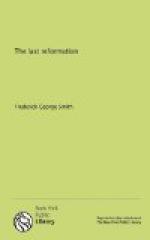It is evident that the second beast of Revelation 13 was not to be such a terrible power politically as was the first beast, for it is described merely as having “two horns like a lamb.” But as soon as we enter the department to which speaking by analogy refers us, we find him to be a great religious power, and it is in this character alone that he is delineated in the remainder of the chapter. That his religious power is his leading characteristic is further proved by the fact that in every subsequent reference he is styled the “false prophet” (chap. 16:13; 19:20; 20:10). Every reference which I give to the second beast must therefore be understood as signifying the religious system known as Protestantism.
This beast was to exercise great power—“all the power of the first beast before him.” By this expression we are to understand that Protestantism was to exert a universal influence; that it was to become a leading factor in the world’s history, as was Romanism before it. This has already been fulfilled. The leading nations of the world today, the nations that have contributed most to the development of modern civilization and to the light and progress of the age, are Protestant nations. Those countries that have retained the yoke of Romanism are still withering under its blighting influence.
It is said that this beast causes people to “worship the first beast.” This is parallel to the statement that during the reign of the first beast the people “worshiped the dragon,” which in reality preceded it. I have shown that the devotees of Romanism worshiped the dragon by perpetuating in their religious ceremonies and worship the practises of paganism. Likewise Protestants have brought over and incorporated in their religious system doctrines, rites, and ceremonies that originated in Romanism; and in this respect they worship the first beast, even in the very act of rendering service to their own system. Such doctrines as infantile damnation, sprinkling for baptism, the eternal destruction of all those who are outside the pales of the church, infant baptism, and other things are all children of the apostasy originating in Rome. The Romish Church possesses a human ecclesiastical headship and an earthly government ruling in the place of Christ, and Protestants make an “image” to this beast by building their sects in imitation—sects made and ruled by men. To these they attach their own names and the distinctive creeds and doctrines of men, and thus their devotees receive the “mark” and “name” of the beast.
At this point we must make a distinction which, being true in the facts of history, must necessarily be intended in the symbolic representation. This beast was to bring down “fire from heaven.” According to the symbols of chapter 12, the woman, or true church, “fled into the wilderness, where she hath a place prepared of God, that they should feed her there a thousand two hundred and threescore




